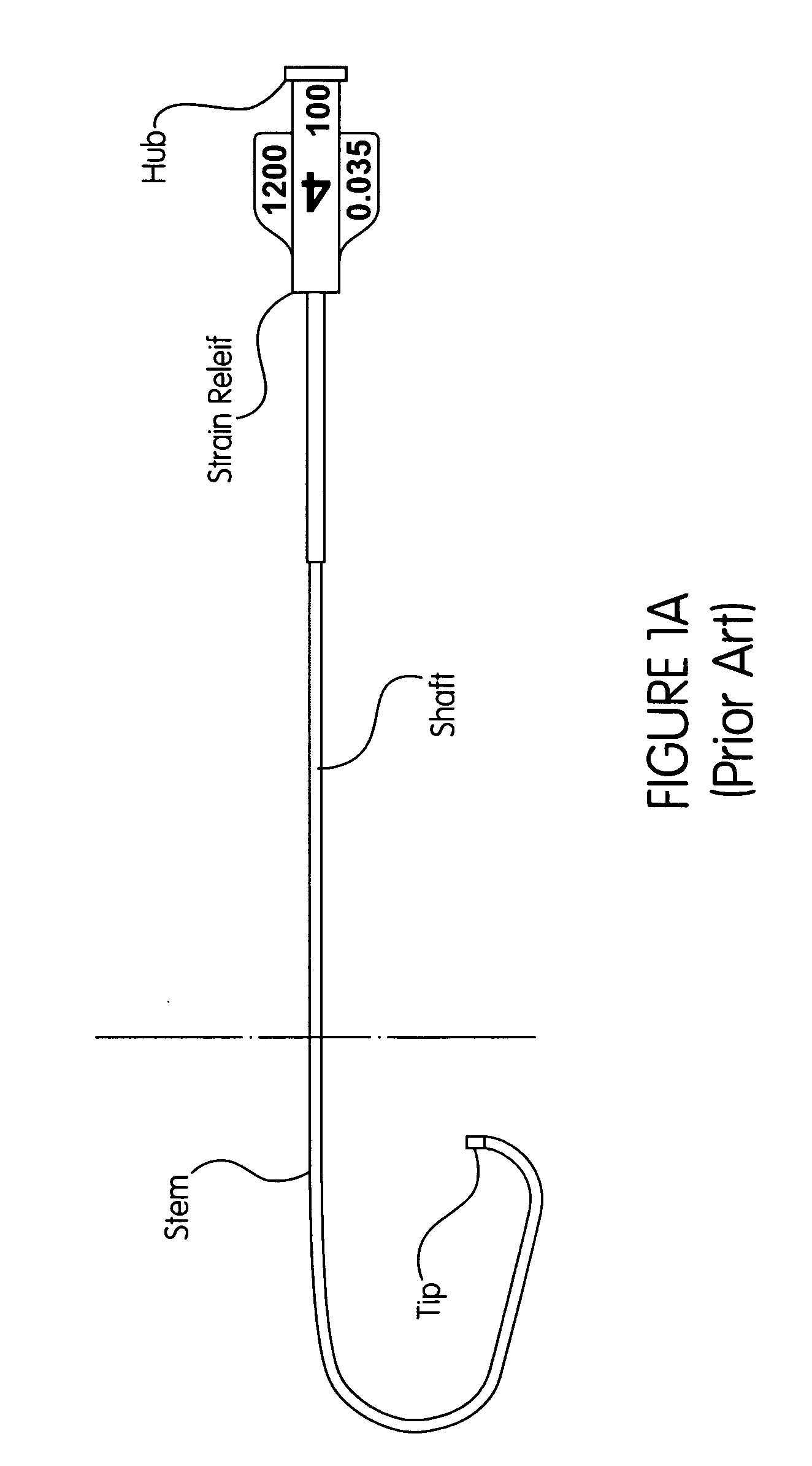Catheter for diagnostic imaging and therapeutic procedures
a catheter and diagnostic imaging technology, applied in the field of catheters, can solve problems such as numbness, tingling or decreased sensation, and achieve the effect of preventing both recoil and whipping and reducing the opening siz
- Summary
- Abstract
- Description
- Claims
- Application Information
AI Technical Summary
Benefits of technology
Problems solved by technology
Method used
Image
Examples
first embodiment
[0068]FIGS. 4A-4R illustrate the invention along with various preferred and alternative aspects. The catheter, generally designated 100, includes a stem equipped with a porous section 200 and a restrictor 300 affixed to the distal end of the stem. As shown in FIG. 4B, the stem is approximately 15.36 mm in length for catheter 100 made in a 4 French size, with approximate outer and inner (lumen) diameters of 1.362 mm and 0.977 mm, respectively. For catheter 100 in the 5 French size shown in FIG. 4G, the stem has a length of approximately 15.9 mm, with approximate outer and inner diameters of 1.694 mm and 1.21 mm.
[0069] Preferably located in proximity to the distal end of the stem, the porous section 200 includes a large plurality of microholes 220n, each of which in communication with the lumen of the catheter 100. For reasons explained in more detail below, all microholes 220n in the porous section 200 are preferably made having the same diameter. Although the diameter is generally b...
second embodiment
[0089]FIGS. 5A-5B illustrate a catheter, generally designated 110, according to the invention. This catheter includes a stem equipped with a porous section 200 along with a restrictor 400 affixed to the distal end of the stem.
[0090] Like the previous embodiment, the porous section 200 includes a large plurality of microholes 220n, each of which in communication with the lumen of the catheter. Although generally set between approximately 5 to 125 microns, the preferred diameter for the microholes 220n is about 50 microns, with all microholes 220n preferably having the same diameter. As best shown in FIG. 5B, the microholes are angled in the proximal direction. The degree of angularity can range approximately from 0 to 45 degrees, with a preferred angle of 20 degrees, though the exact angle will depend on the factors noted above. The preferred length of porous section 200 is 6 mm, though it can range from 2 mm to 2 cm or even longer. The microhole pattern is preferably located close t...
third embodiment
[0096]FIGS. 6A-6C illustrate a catheter, generally designated 120, according to the invention. This catheter includes a stem along with a restrictor 500 affixed to the distal end of the stem. Catheter 120 is similar to the other disclosed embodiments in that it uses a combination of proximally-angled microholes and a restrictor to create a uniform, fog-like dispersion of fluid during an injection while the tip remains stationary in the vessel or other structure into which it has been placed.
[0097] Like the previous embodiments, the stem has a porous section 200 that features a large plurality of microholes 220n, each of which in communication with the lumen of the catheter. Unlike those embodiments, however, the microholes of catheter 120 are situated not only in the stem but also in the restrictor 500. The microholes of restrictor 500 are generally designated in the drawings as 520n.
[0098] The microholes 220n of the stem have a diameter generally set between approximately 5 to at ...
PUM
 Login to View More
Login to View More Abstract
Description
Claims
Application Information
 Login to View More
Login to View More - R&D
- Intellectual Property
- Life Sciences
- Materials
- Tech Scout
- Unparalleled Data Quality
- Higher Quality Content
- 60% Fewer Hallucinations
Browse by: Latest US Patents, China's latest patents, Technical Efficacy Thesaurus, Application Domain, Technology Topic, Popular Technical Reports.
© 2025 PatSnap. All rights reserved.Legal|Privacy policy|Modern Slavery Act Transparency Statement|Sitemap|About US| Contact US: help@patsnap.com



